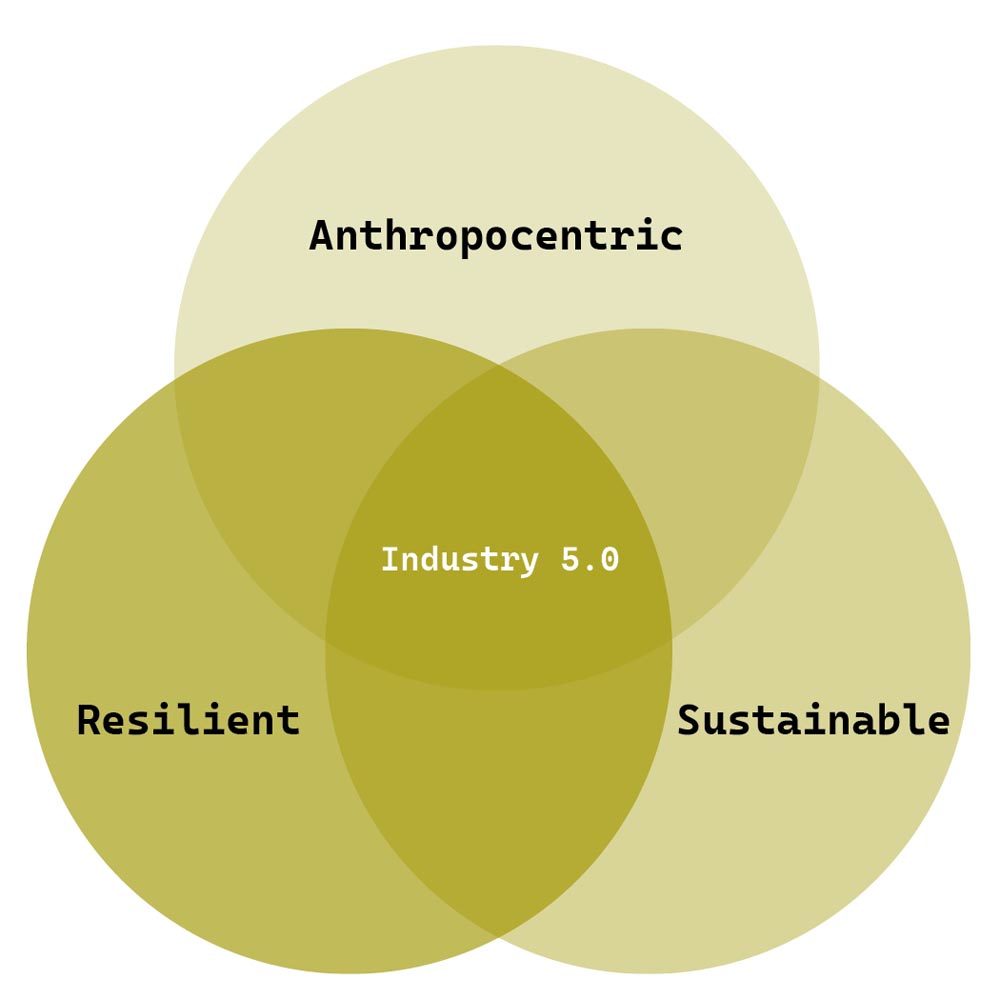Industry 5.0
From economic welfare to societal wellbeing
According to the European Union, the three pillars of Industry 5.0 are anthropocentric, sustainable, and resilient.
According to the European Union’s Research and Innovation Commission, Industry 5.0 “provides a vision of industry that aims beyond efficiency and productivity as the sole goals and reinforces the role and the contribution of industry to society…. It places the wellbeing of the worker at the centre of the production process and uses new technologies to provide prosperity beyond jobs and growth while respecting the production limits of the planet.” Cast another way, Industry 5.0 represents an about-face from the value of economic welfare to the value of societal wellbeing.
Industry 5.0 departs from Industry 4.0 by “specifically putting research and innovation at the service of the transition to a sustainable, human-centric, and resilient European industry.” As the European Commission argues, the strategy is “agile and resilient with flexible and adaptable technologies.” After COVID-19, global shortages of supplies, and the war in Ukraine, it is clear resilience is key to any strategy moving forward—today and in the future.
While agility and flexibility figure prominently on most company agendas, these in themselves do not necessarily translate to resilience. Most business strategies today are driven by efficiency and optimizing profits, not resilience. This focus on efficiency drives many initiatives to make companies more agile and flexible, but leanness leads to less rather than greater resilience.
Where the three pillars of Industry 5.0 are concerned, resilience means the primary focus will no longer be on growth, profit, and efficiency, but on creating organizations that are antifragile, meaning they are able to anticipate, react, and learn—timely and systematically—from all manner of crisis and thereby ensure stable and sustainable performance.
There is no widely accepted definition of Industry 5.0, but the general objective is to decrease the emphasis (not reliance) on technology and reorient the potential for progress based on collaboration among humans and machines utilizing big data analytics, IIoT, collaborative robots, blockchain, digital twins, and future 6G systems to get there.
AI, blockchain, and decentralization in particular are expected to enable new forms of collaboration and innovation in Industry 5.0, as well as improved efficiency, transparency, and security in manufacturing and supply chains.
- AI enables machines to learn from experience and make decisions based on data and feedback from human workers, optimizes manufacturing processes, improves quality control, and offers more personalized and responsive manufacturing.
- Blockchain improves the transparency and security of supply chains, enabling more efficient and secure transactions between different stakeholders. It could also enable the creation of decentralized marketplaces for raw materials, components, and finished products.
- Decentralization is a key feature of Industry 5.0, with a focus on distributed manufacturing, decision-making, and innovation. Decentralized systems could enable more flexible and adaptable production processes, with greater resilience and responsiveness to changing market conditions.
The revolution of Industry 5.0 means human workers and universal robots are boosting the productivity of the manufacturing industry. Each of the executive teams of the manufacturing company is required to define the production line, then follow the key performance indicators and ensure that the processes are working—in a manner akin to what we have come to expect from our personal technological devices and services—frictionlessly.
An anthropocentric strategy is one that prioritizes the talents, diversity, and empowerment of people. The most important shift this suggests is one from seeing human resources as ends rather than means. Or, in other words, a shift in perspective from people serving organizations to organizations serving people, which aligns with current developments in the job market. In many industries and countries, finding, serving, and keeping talent has become a much greater challenge than finding, serving, and keeping customers.
Whether one finds this vision appealing or daunting will differ vastly between companies and between people. And the extent to which it will be embraced or rejected rests in the extent to which we embrace or reject the premise of becoming more anthropocentric, resilient, and sustainable.






